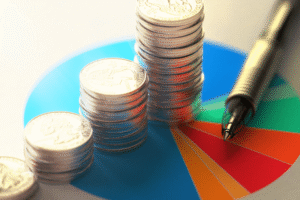Enhancing Your Credit Utilization Rate: Tips for Improvement
Grasp credit utilization rates

If you’re monitoring your credit score, you might have come across the term “credit utilization rate”. While it may initially appear complex, grasping its meaning and ways to enhance it can significantly influence your financial wellness.
So, what exactly is it and how can you boost it? Together, let’s discover how to optimize this rate, elevate your score, and unlock better financial prospects. Stay tuned!
Defining the credit utilization rate
The credit utilization rate indicates the fraction of your credit limit that is currently being utilized. It’s computed by dividing your total debt balance by your total available credit. For instance, with a $5,000 limit and a $1,000 balance, your utilization rate stands at 20%.
Why does this matter? Credit agencies evaluate this metric to determine your reliance on credit. A high utilization rate could signal a greater risk to lenders, potentially harming your score. It’s advisable to keep this rate under 30%, with lower being preferable.
Ways to enhance my credit utilization rate
Now that you’re informed, it’s time to delve into methods for boosting your credit utilization rate. To simplify things, we’ve compiled key tips for you! Check out the following list!
1. Make timely bill payments
This may seem straightforward, but timely payments are crucial for managing your utilization rate. Consider paying off part or all of your balance before the billing cycle closes. This action results in a lower amount being reported to credit agencies, thereby reducing your utilization.
2. Raise your credit limit
Requesting an increase in your credit limit can be an effective method to lower your utilization, provided you don’t boost your spending. If your income or credit standing has recently improved, reach out to your card issuer for a review. Just remember, the increase benefits you only if your balance remains low.
3. Spread your spending across multiple cards
If you possess several credit cards, aim to distribute your expenses among them. Keeping each card’s usage below 30% of its limit can help maintain a favorable overall rate. Just be cautious not to let debts pile up across multiple cards.
4. Keep old cards open
While it might be tempting to close unused cards, doing so can reduce your total credit limit and increase your utilization ratio. If there’s no annual fee or extra charges, keeping the card active can be beneficial. Plus, older accounts contribute positively to the average age of your credit history, which is crucial for your credit score.
5. Make extra payments during the month
You can pay off your balance before the bill arrives. Making extra payments throughout the month can lower the balance reported to credit bureaus and enhance your score. Frequent small payments can also reduce interest impact and help manage debt more effectively.
6. Monitor your spending regularly
Utilizing spending tracking apps can significantly help. By keeping tabs on your spending and remaining balance in real time, you can easily stay within budget and avoid exceeding your limits, preventing any unpleasant surprises at the month’s end.
7. Negotiate with your creditors
If you’re experiencing financial strain, try negotiating with your creditors for better terms. Lowering interest rates or consolidating debts into a single loan with more favorable conditions can assist you in managing your credit more effectively.
Why is this worthwhile?
Keeping a low utilization rate not only enhances your credit score but also demonstrates your ability to handle credit responsibly. A solid score can lead to better loan interest rates and increased financial flexibility down the road.
Improving your utilization rate takes time, but consistent, small efforts can create a significant impact. The key is to have a strategy and stick to it, making adjustments as needed.
With determination and insight, you can master your credit and shape your financial future. Remember, you have the ability to enhance your financial wellbeing, one step at a time!





